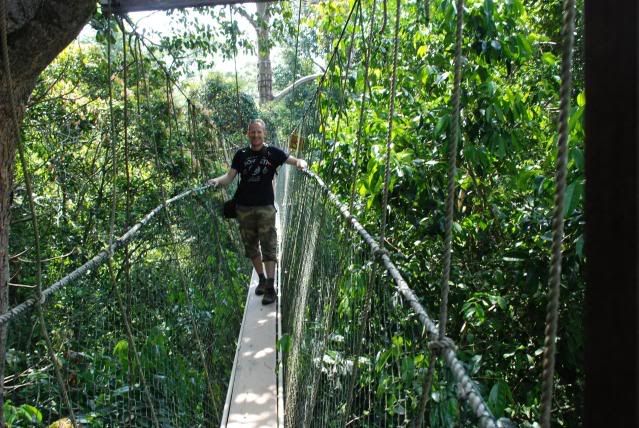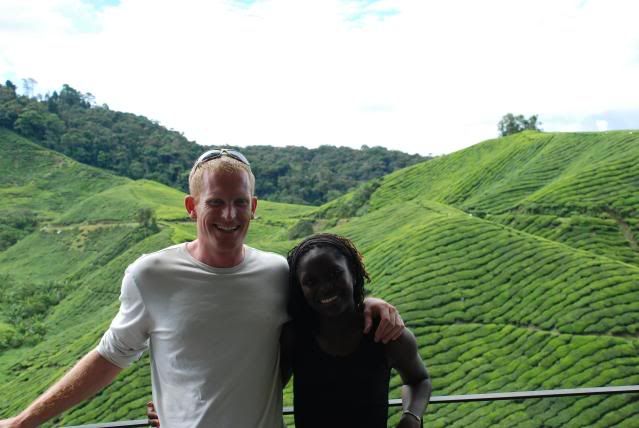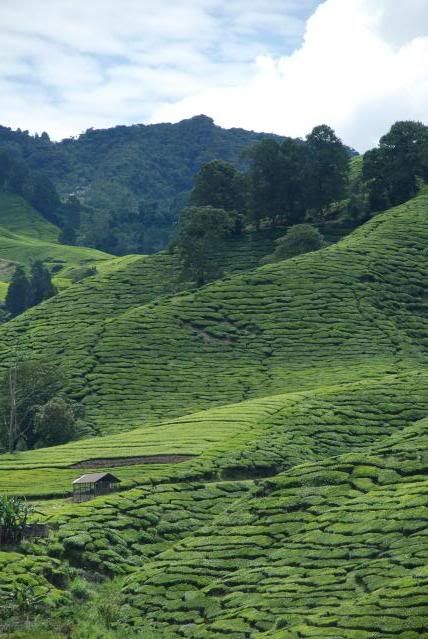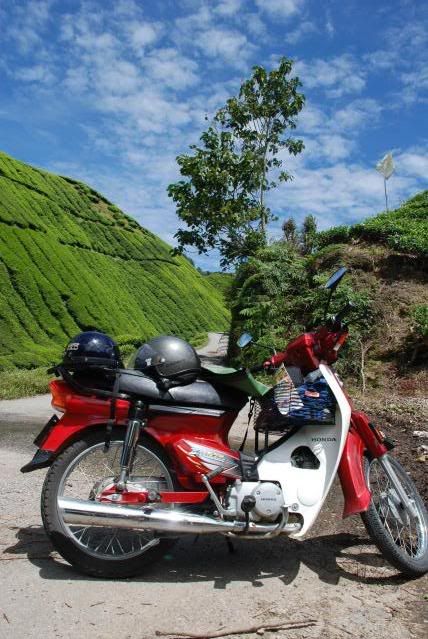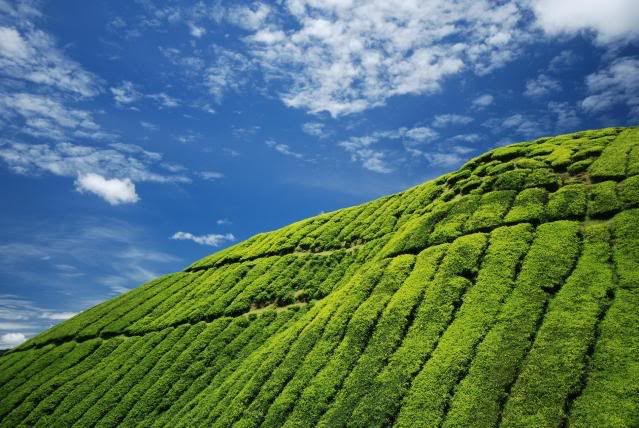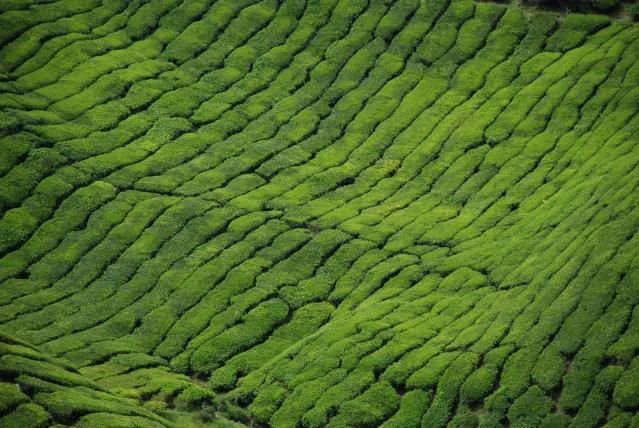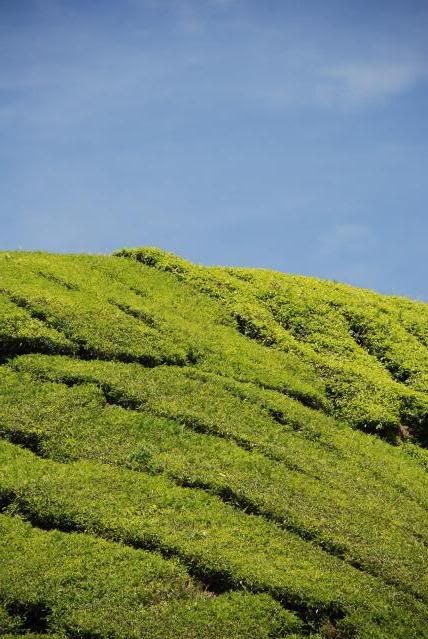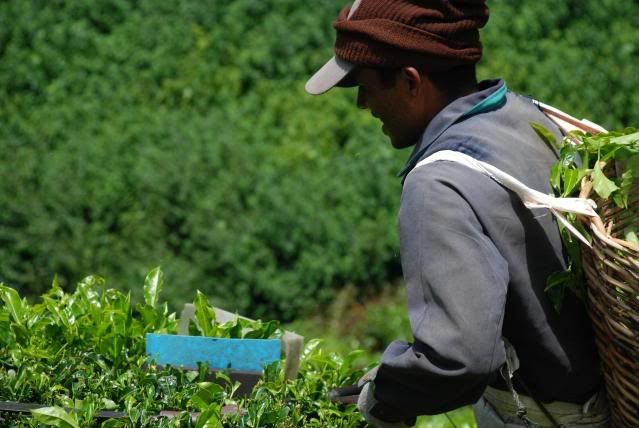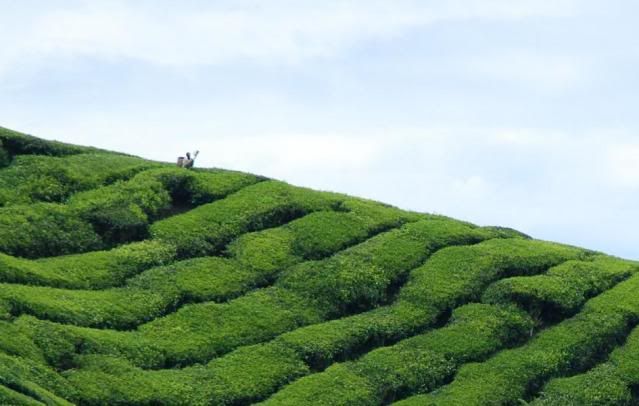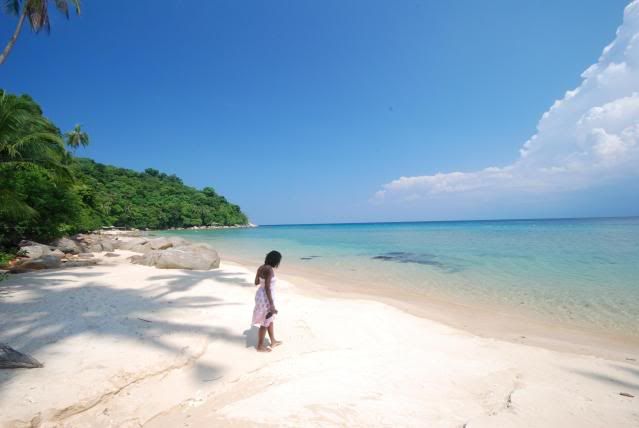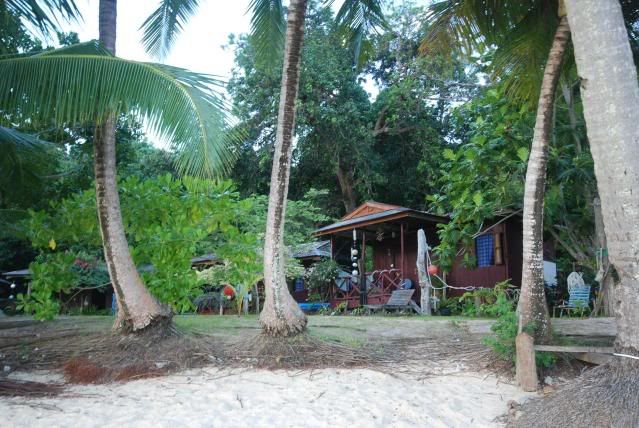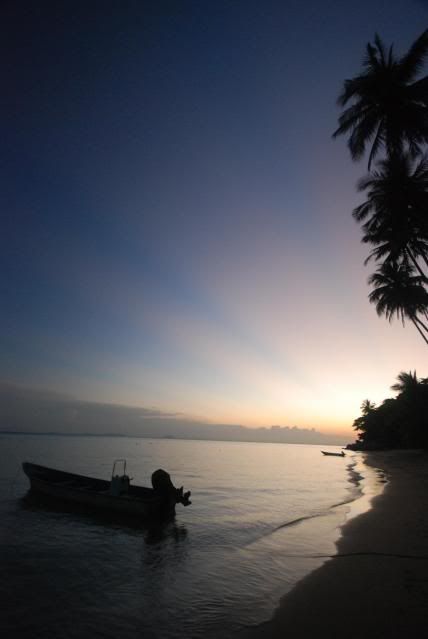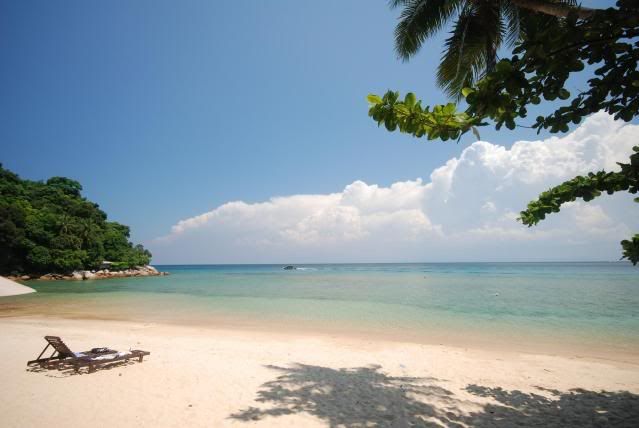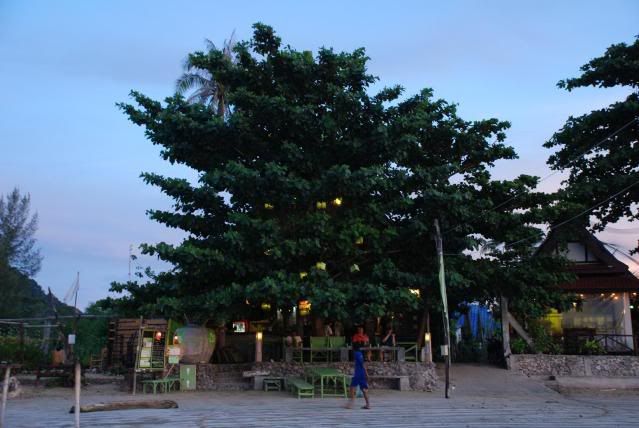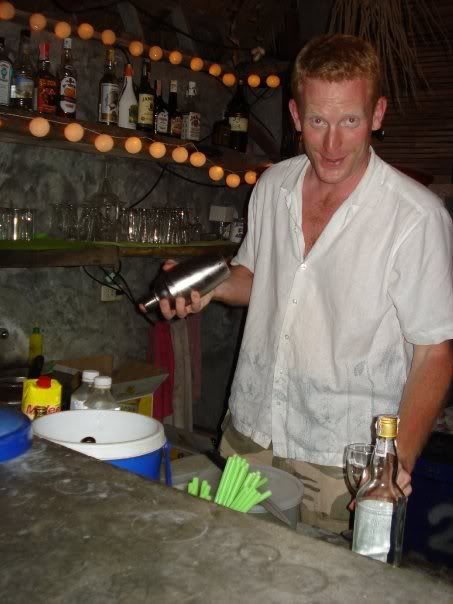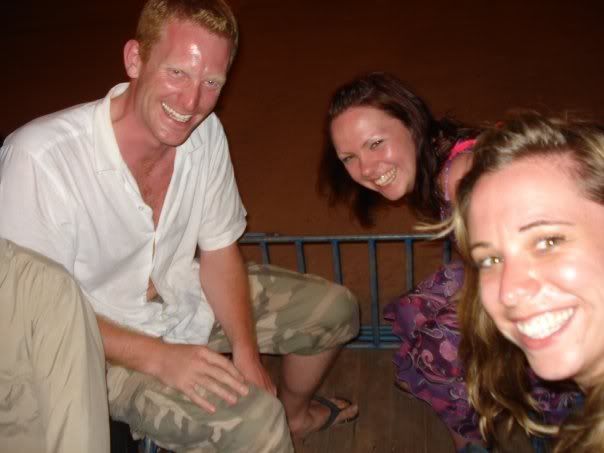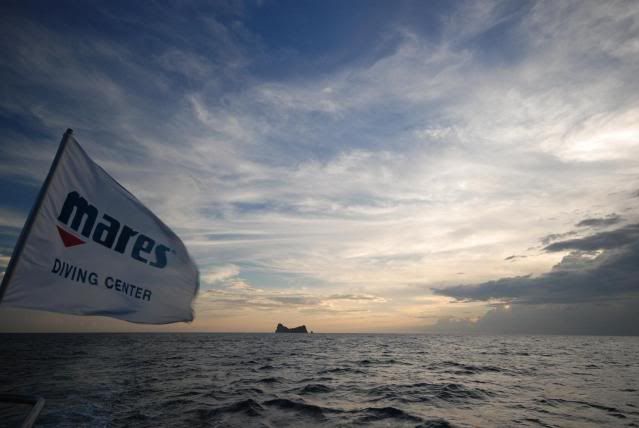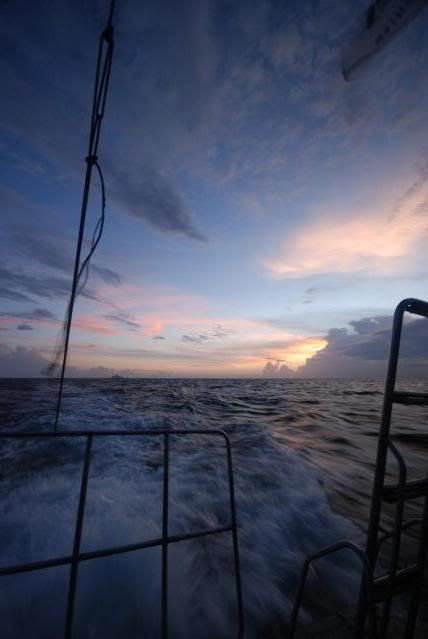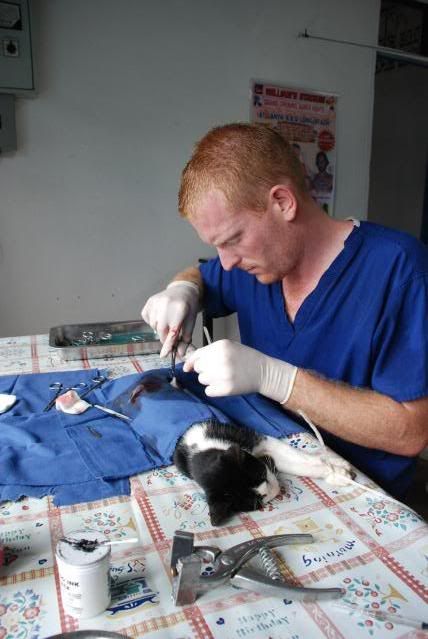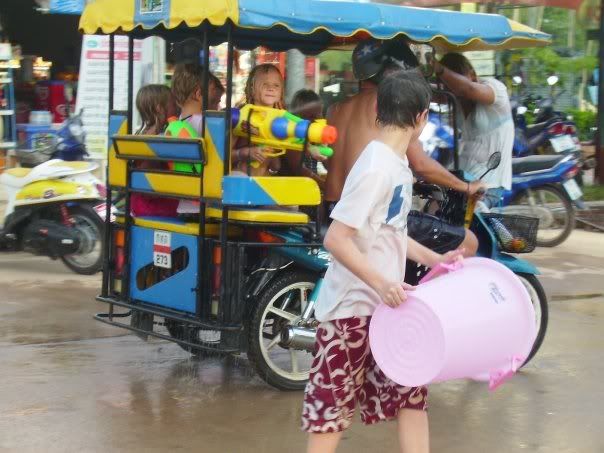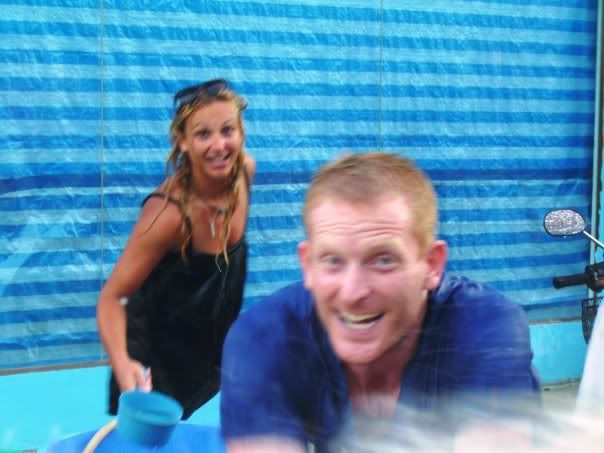Palm oil plantations stretched as far as the eye could see as the plane came into land at Kuala Lumpur - although there was a worrying lack of city visible anywhere close. With my Song Kran antics catching up with me I dozed for most of the flight and bus ride into the city, only waking when I was surrounded by huge tower blocks and immaculately manicured gardens, both public and private.
In KL I met Pekwor, a friend from home who was coming out for a well deserved holiday, who had already checked into an upmarket backpacker place (also known as "flashpacking") in Bukit Bintang, east of the city centre. We went out for a wander around - I was taken aback by the wide roads, clean pavements, abundance of traffic lights (that people actually paid attention to) and lack of mopeds - it gave the impression of being a very modern city. Alongside this were the hoards of street stalls selling everything under the sun - as long as it was fake.
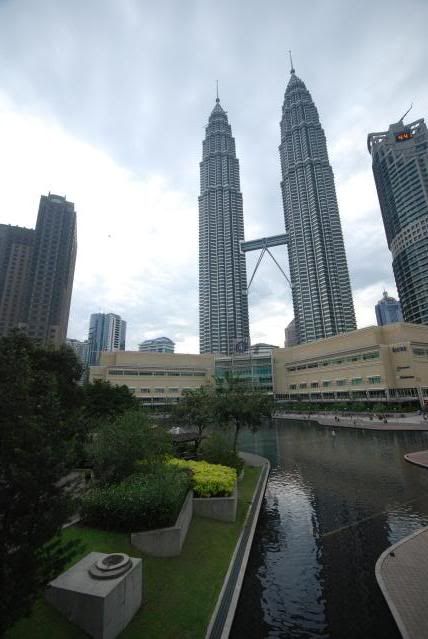
The next day we made a whistle stop city tour - first to the Petronas Towers to visit the Skybridge. The Petronas Towers are the tallest twin skyscrapers in the world, and the Skybridge sits at the 41st floor linking the two. It was an impressive view but still a little underwhelming when you considered you were only half the height up the tower. After a walk around Chinatown, the old Colonial Centre and Little India, and searching for cheap electronics goods (not so cheap - use Amazon!) we were grateful for the airconditioned calm of KL's various city railways, monorails and metro - although by 6pm the crush was as bad as rush hour anywhere.
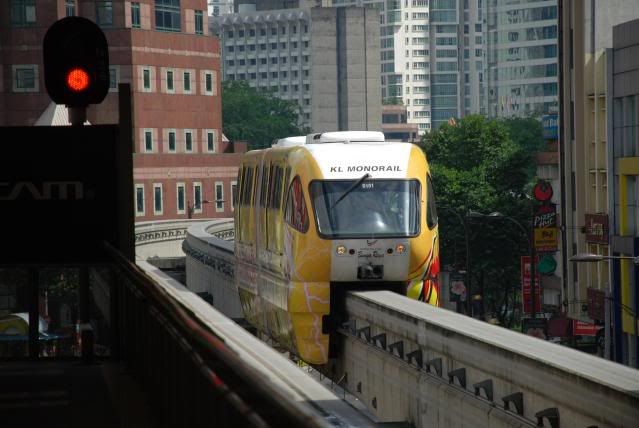
Malaysia - independent since 1957, was formerly an array of different states run by the British. Pensinsular Malaysia was known as Malaya and divided into several states; while on Borneo the state of Sarawak was controlled by the English "White Rajahs" of the Brooke family, and the state of Sabah was known as British North Borneo, and was controlled by a British company of the same name. Also included in the Federated States of Malaysia intially was Singapore, until it pulled out of the Malaysian federation after a couple of years.
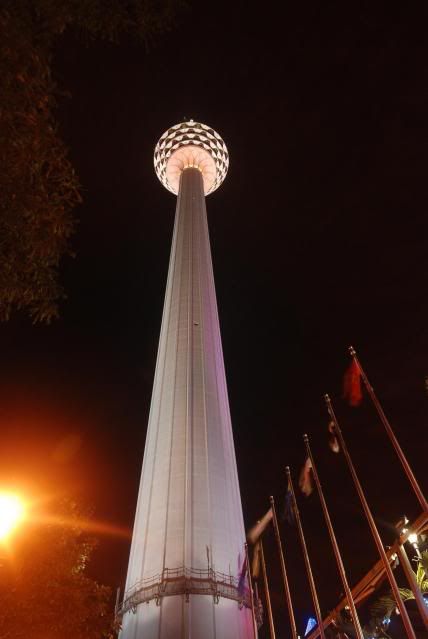
Peninsular Malaysia has seen a huge change in population since colonial times. Initially claimed by the Dutch, the British took over gradually after the Napoleonic wars (not claiming all of Malaya until 1914) and, predictably, started doing things the colonial way. This started with a huge influx of Chinese immigrants, many who were involved in tin mining - by 1891 they comprised 41% of the population, ahead of the Malays (around 33%) and the 22% of Indians, most of whom had been imported by indentured labourers by the British.
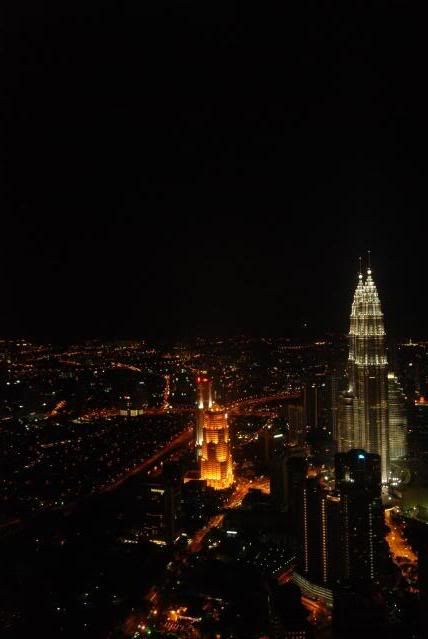
Because of this population mix it is possible to eat fabulous Malay, Chinese and Indian food in most towns that you visit. The following day we headed up to the Cameron Highlands, the 6 hour bus journey ending in a winding ascent along a narrow mountainside road. A former British hill station lying at 1600m, the Cameron Highlands' cooler climate allows a huge range of vegetables, strawberrys and roses to thrive, as well as tea plantations - the area is home to the largest plantation in South East Asia.
After checking into a small, friendly inn, Pekwor and I hired a moped to visit the surrounding locale. We weren't so enthusiastic to see the local "Orang Asli" village - the local tribe who all had Sky TV and broadband access - but were keen on having a look around the tea plantations and trying the scones for which the area is famous.
As it turned out, our base in the town of Tanah Rata had a number of excellent Indian restaurants (eating Indian for breakfast, lunch and dinner was no problem for me) and our own little inn had scones that were by far and away the best I have ever tasted.
We saw rose gardens, strawberry gardens, a bee farm, a butterfly farm and an insect village - all of which paled in comparison to the tea plantations. Driving up on our little moped we explored small winding valleys blanketed either side by incredibly verdant, well kept tea bushes, stretching out for miles around us. The colours were beyond any kind of green you see back home, and I never tired of taking picture after picture.
On the second day we headed up Gudung Brinchang - the highest mountain around at some 2000m - the views from the tower on top were impressive but it failed to match the spectacle of the tea plantations. After some more exploring (and wrong turns) we found ourselves in the middle of a vegetable farm where cabbages were being shipped off in neat blue Tesco boxes - an unwelcome reminder of home.
We stopped to take some photos of tea pickers at work across the valley; their foreman, a chap called Ujul from Sri Lanka, called us over, posed for photos and showed us what they were doing. Tea bushes look almost like privet hedges were being trimmed with modified shears - plastic boxes bolted onto the blade to collect the leaves, which were then thrown into a basket on the back. It proved to be far more difficult than it looked, especially on a 30 degree slope under a baking sun.
The following day, armed with take away scones and lots of water, we took a bus across to the east coast of Malaysia where we were heading for the Perhentian Islands. The islands are now firmly established as a must-visit on the backpacker route, with their warm water, palm-fringed beaches and excellent diving and snorkelling. We had booked into the small resort of Petani Beach - 5 beachfront chalets on a private stretch of sand - and were not disappointed.
Despite the basic nature of the chalets - no electricity in the day, no air con, no hot water - we had a fabulous time snorkelling, kayaking and eating the delicious food cooked up to order each meal. The water was very warm, and within minutes of getting in we saw a black tip reef shark, just metres from the beach. We also saw green turtles and more clownfish - a la Nemo - than could be counted.
In the evenings the small group of guests would gather together and have the special of the day for dinner - usually fish or seafood that had been caught that day. We made friends with PJ and Sophia, a Scandinavian couple, as well as Raymond and Martina, who we had bumped into in the Cameron Highlands, then would play Yahtzee and watch the lightning flashes from storms as they rolled their way up the mainland coast.
Our 4 days there finshed all too quicky, and we headed back to Kota Bharu from where Pekwor would start an unenviable 24 hour trip home. After a very quick and efficient transfer I left Pekwor at Kota Bharu airport, whilst I checked into a small Chinese run hostel and got my mounting pile of laundry in for the steam-cleaning it deserved.
The following day I took a stroll around Kota Bharu; apart from the local "cultural show" with exhibitions of local traditional music and martial arts, there was an interesting museum covering World War Two and the subsequent Malaya Emergency and independence.
Most people think that the Japanese entry into the Second World War was at Pearl Harbour; in fact, just a couple of hours earlier the Japanese began their invasion of Malaya close to Kota Bahru. The British defence of the pensinular was unspectacular to say the least; the Prince of Wales and Repulse were sunk in a move to counterattack the Japanese fleet, and a rapid retreat southwards ensured a scorched earth policy. Britain's bastion of South East Asia, Singapore, fell after a 2 week siege.
After the war ended, plans were drawn up with the eventual aim of independence of Malaya, and in 1948 the Federated States of Malaysia first came into being. Around the same time Malay nationalism was crystallising some of it's ideas - citizenship rules in the new Federated states meant that 78% of people allowed to vote were Malays - but the Chinese Malay population felt ignored and, under the banner of Communism an armed rebellion broke out.
The Malayan Communist Emergency, so called apparently because the economy was not covered by insurance against war, began badly for the British who were taken by surprise; in 1951 the High Commissioner was assassinated. It was not until 1953 that the communists were on the retreat, and by 1960 the Emergency was declared over. Some communists continued to fight, retreating into the jungle along the Thai-Malay border - in relatively recent times they have surrendered on being granted amnesty.
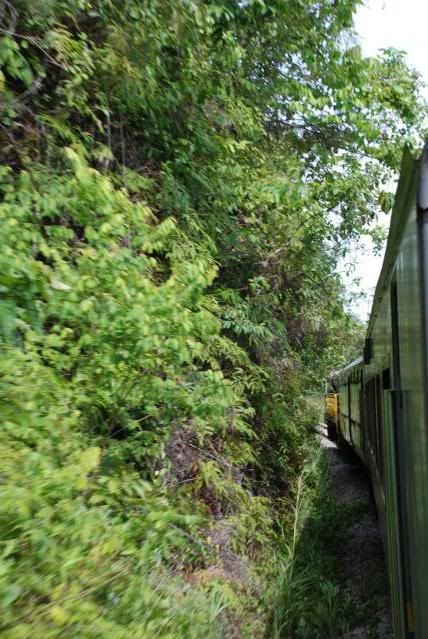
It was to the jungle where I was heading next - to Taman Negara National Park, pensinsular Malaysia's best and largest park. To get there I caught the slow, meandering "jungle train" - a service that makes it's way from Kota Bharu south through the jungle interior of the country stopping at small communities enroute. After a full day of travel on the hot and airless train, with short breaks for air standing by the wedged-open doors, I arrived in Jerantut, the jumping off point for the park.

The following morning I sped upriver to the park HQ, set on a river on the southern side of the park. After installing myself in a friendly but overly basic dorm I went exploring. My first stop was a hill a couple of miles from the HQ; by the time I reached the top I was sweating buckets, and was relieved to find a quiet spot on a river for a swim on the way back.
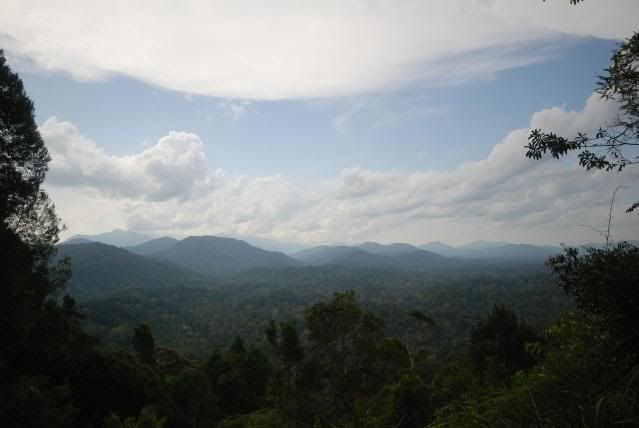
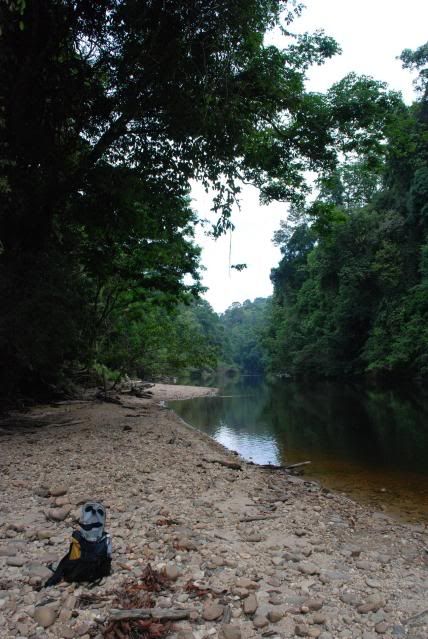
Being one for foolhardy adventure, the next day I was departed on an overnight trip to the northern end of the park with a French couple. The Park boasts elephants and tigers among it's occupants, but sightings are very rare, especially around the busy HQ area. As we set off with our 15 year old guides, within a few minutes we came across elephant footprints on the trail, but sadly never more than that.
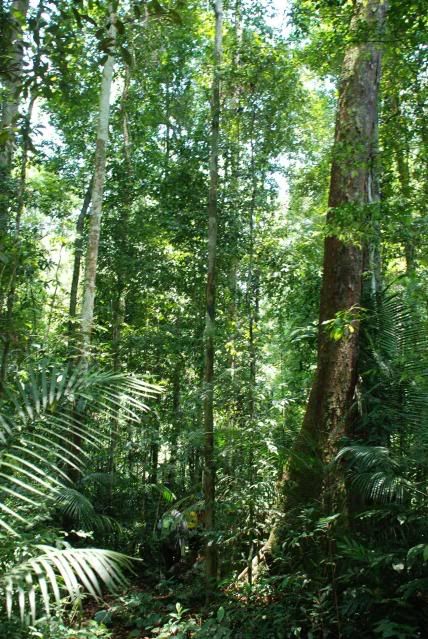
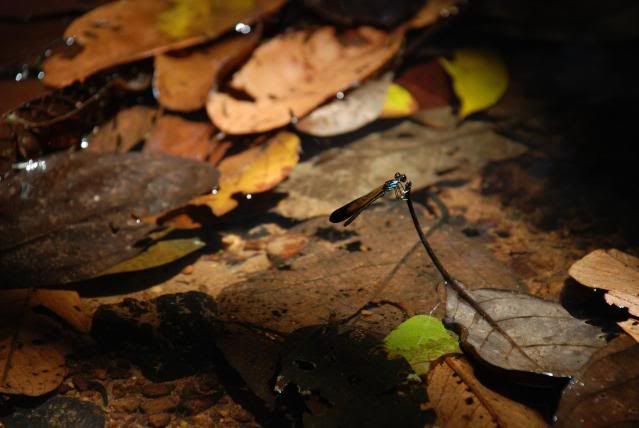
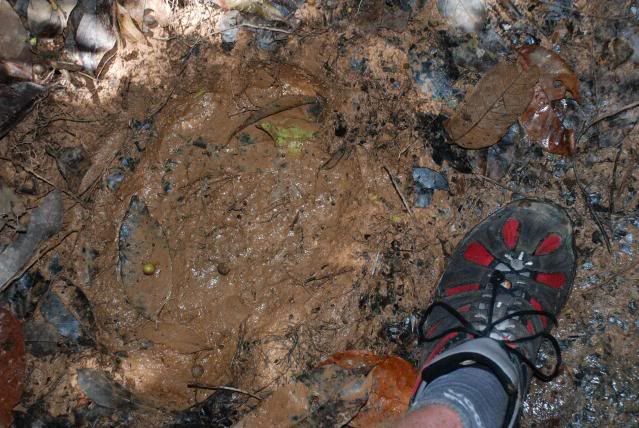
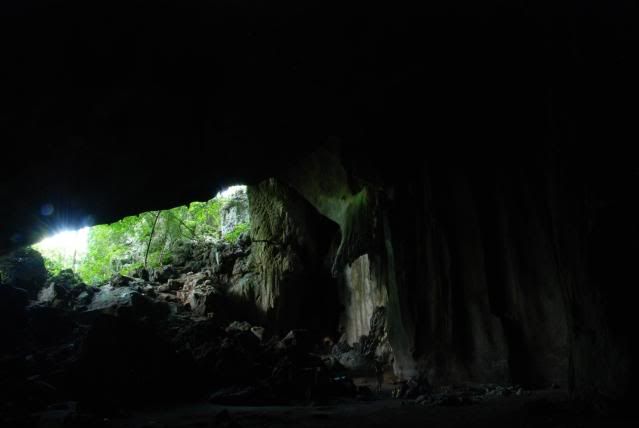
In fact, apart from the vicious and neverending leeches, we didn't see much wildlife. We sweated our way to our camp - a vast limestone cave, the size of a cathedral, where after a bath in a nearby stream we tried to dry our soaking clothes whilst listening for elephants, tigers, monkeys... anything.
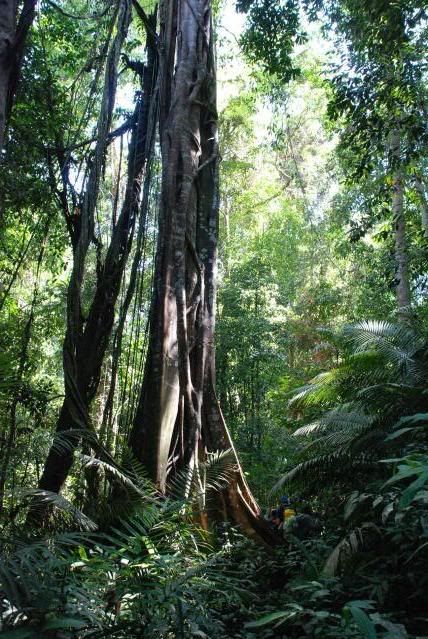
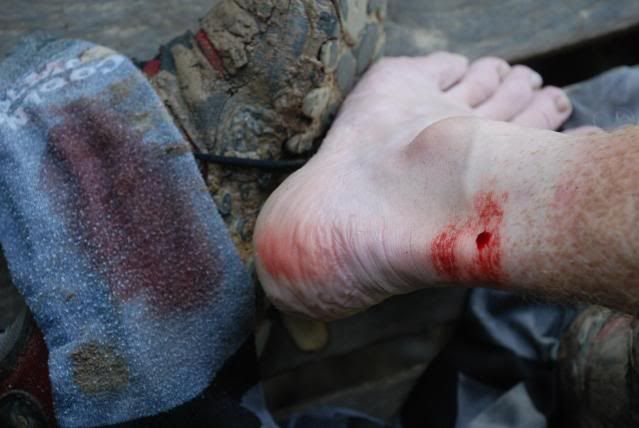
The following day was similar - very hot, lots of leeches, not a lot of wildlife. We reached the main river by midafternoon and all of us, guides included, swam in the muddy water until our boat arrived to pick us up. There was an almost obligatory stop at an Orang Asli village on the way back - although lacking SkyTV and broadband, they had seen enough tourists on a daily basis to turn the village into a human zoo which I found uneasy and disquieting.
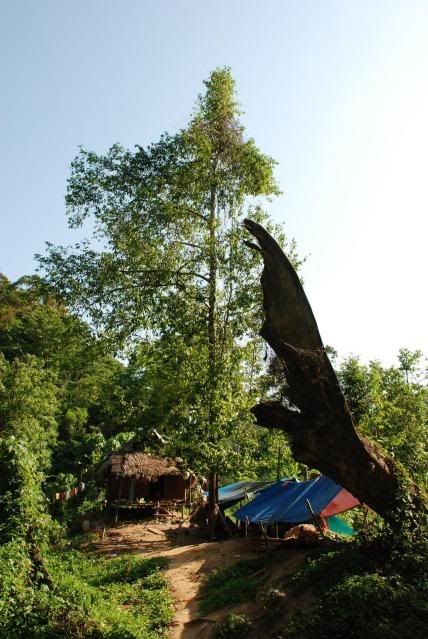
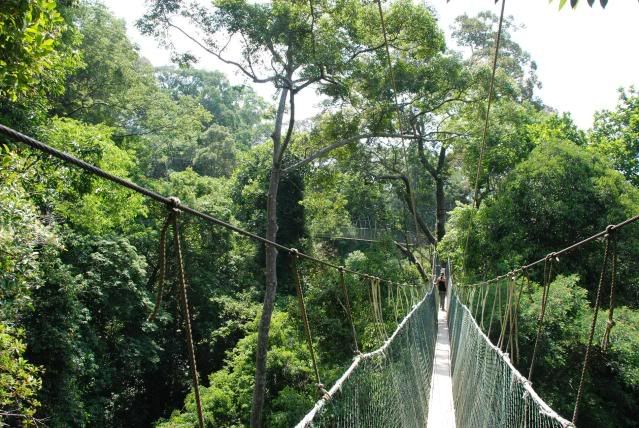
Back at my hostel I met up with a nice group of Brits, and the following morning I joined them on the canopy walkway, a series of rope bridges suspended high in the rainforest canopy that was truly spectacular. Again, there was no wildlife, but the views down were enough to make it worthwhile and I had to run to catch my boat back to Jerantut, from where I was taking a sleeper train back to KL for the next (unplanned) leg of my trip.
